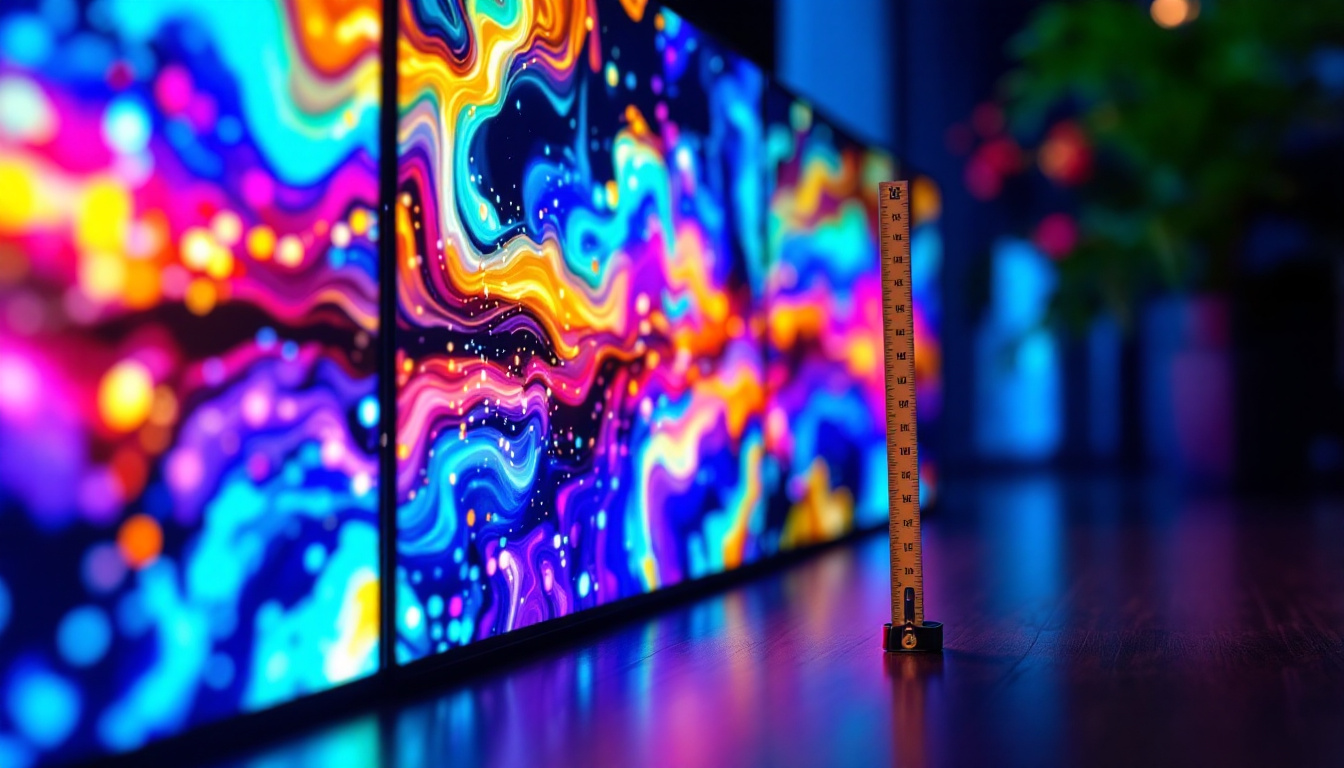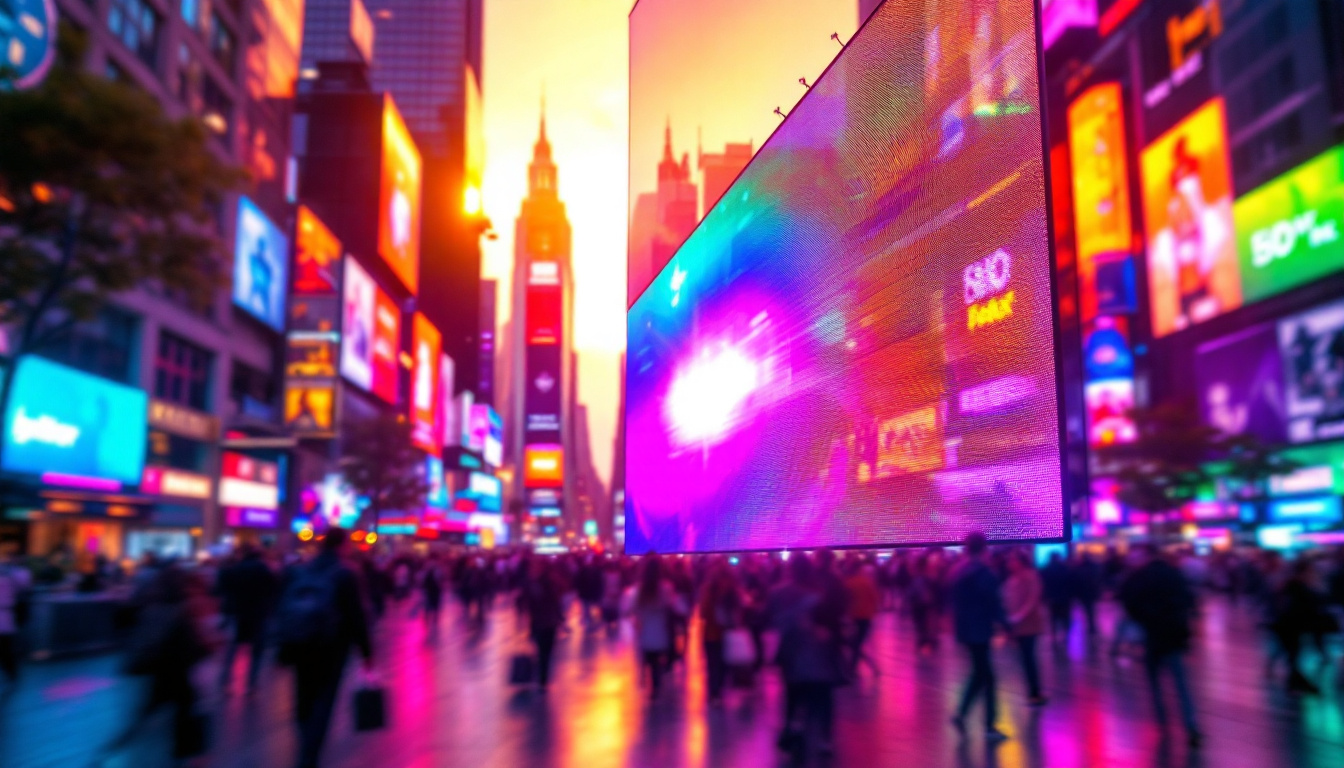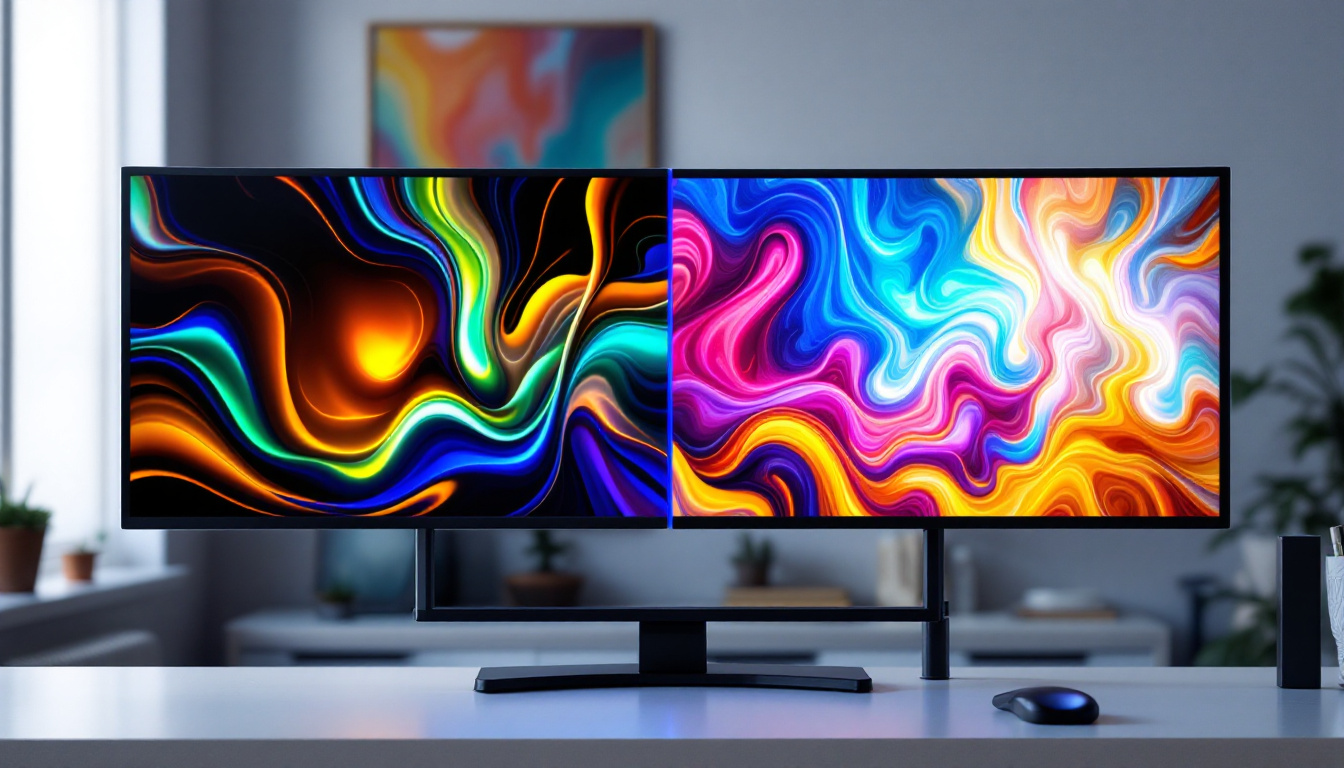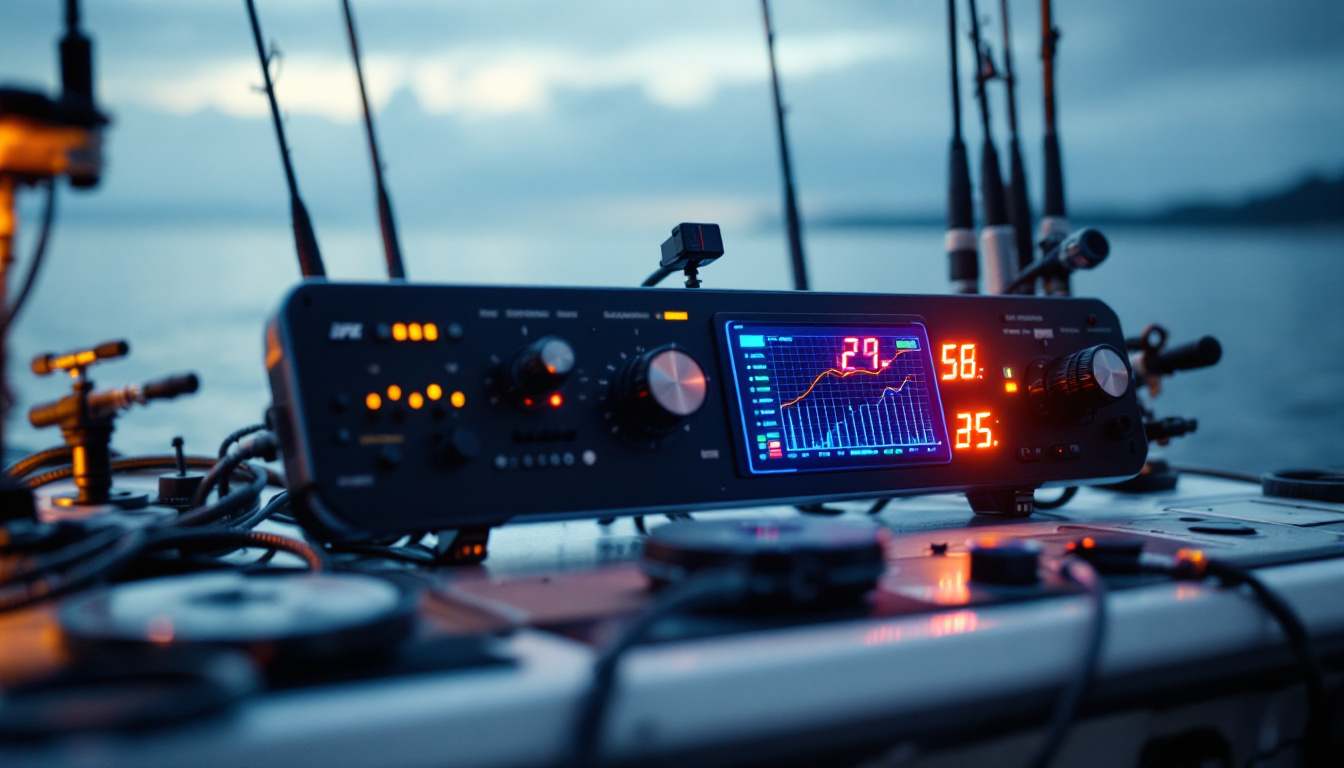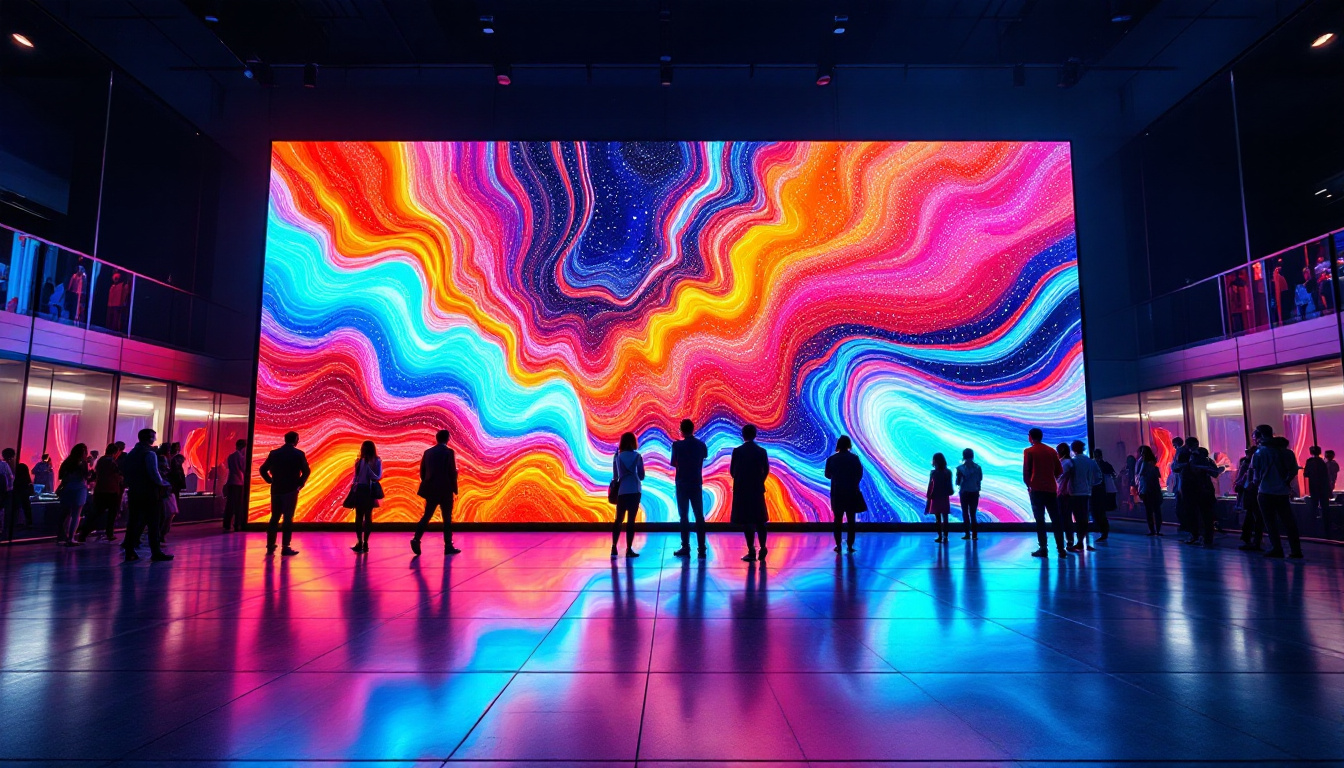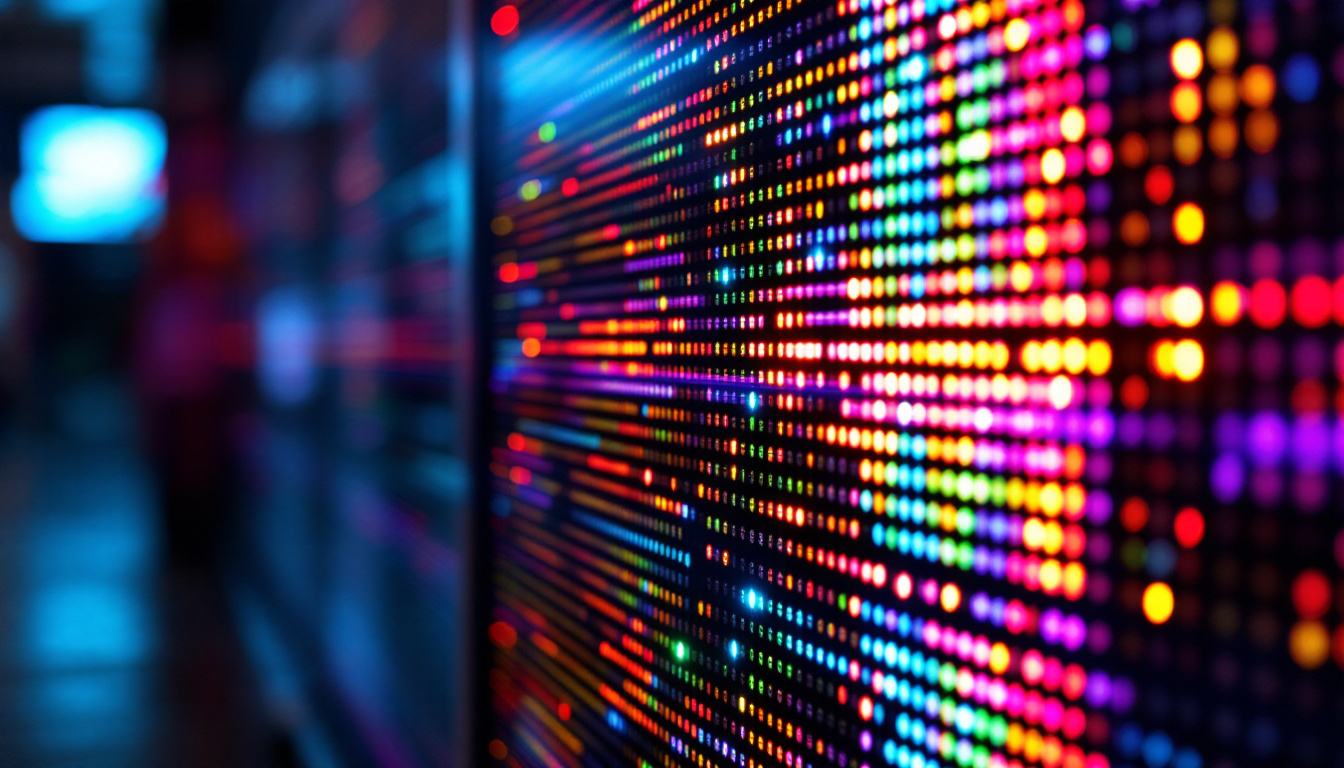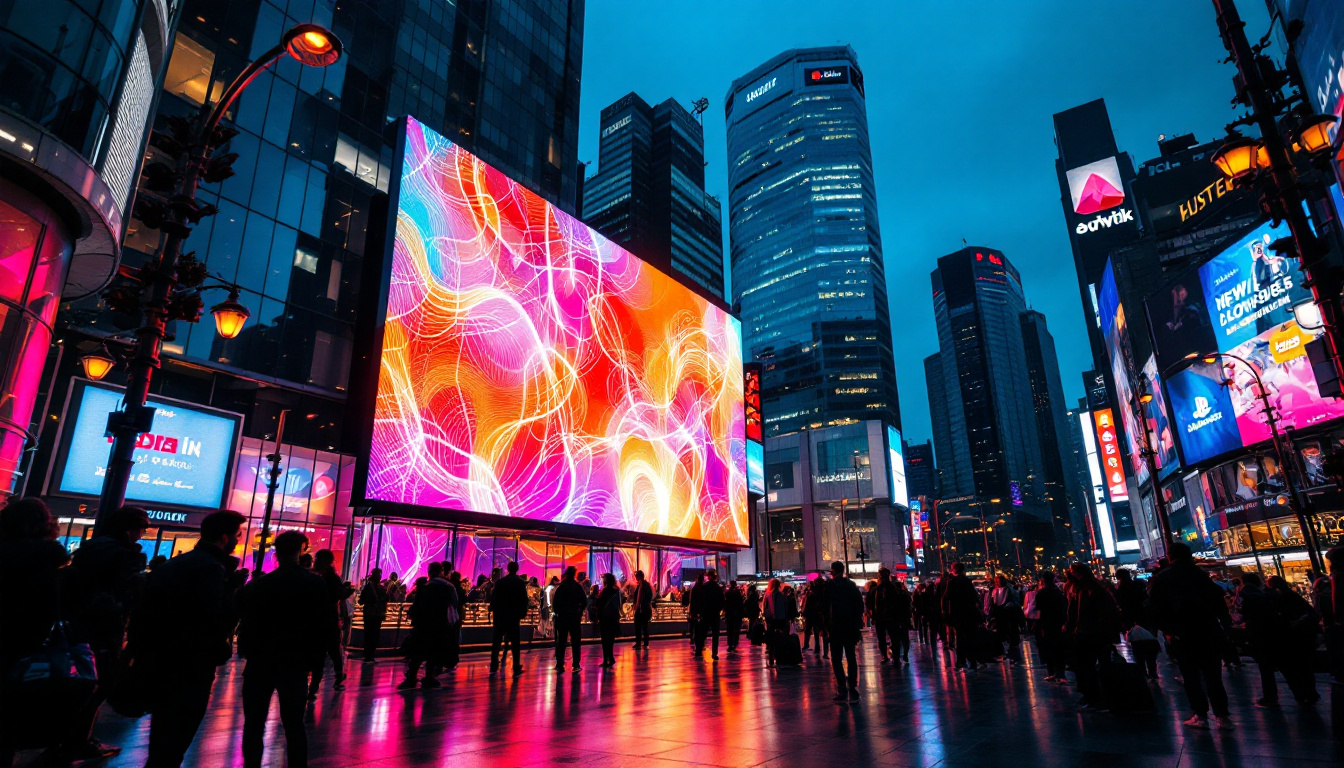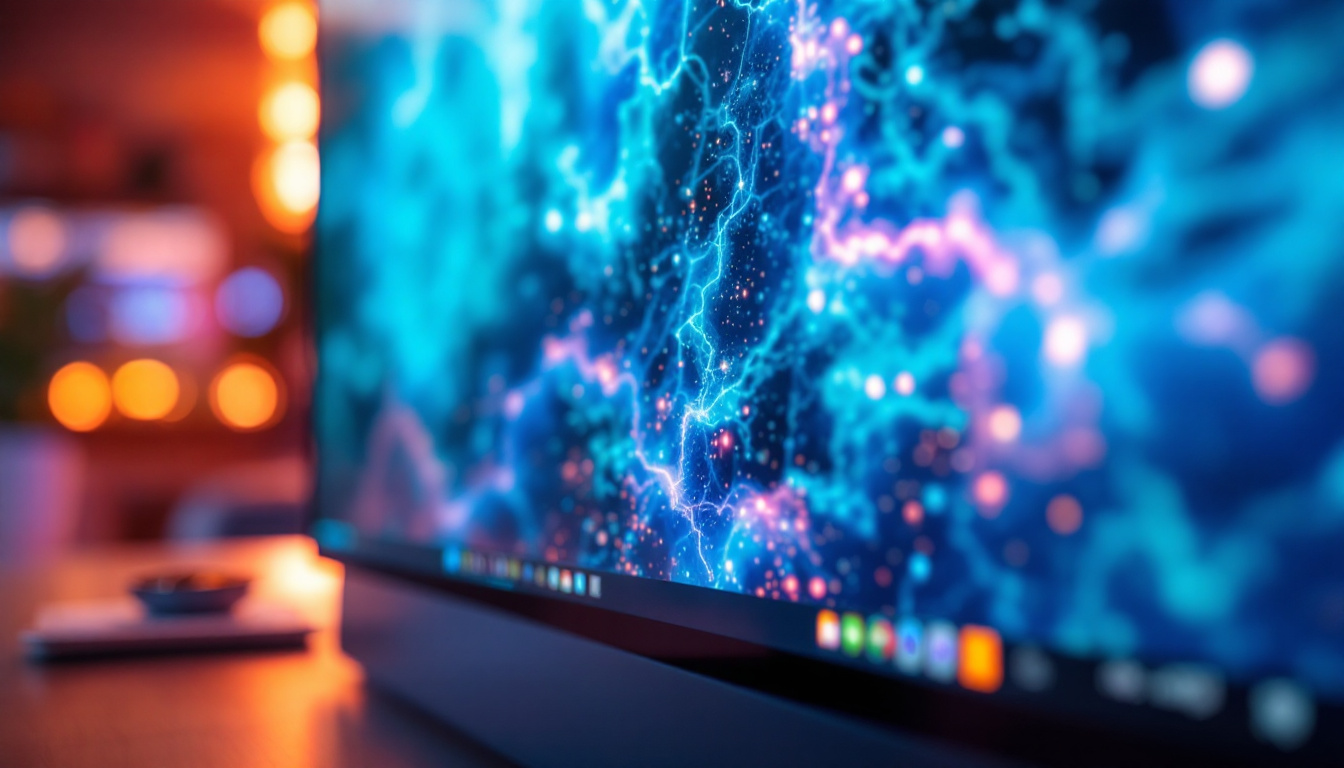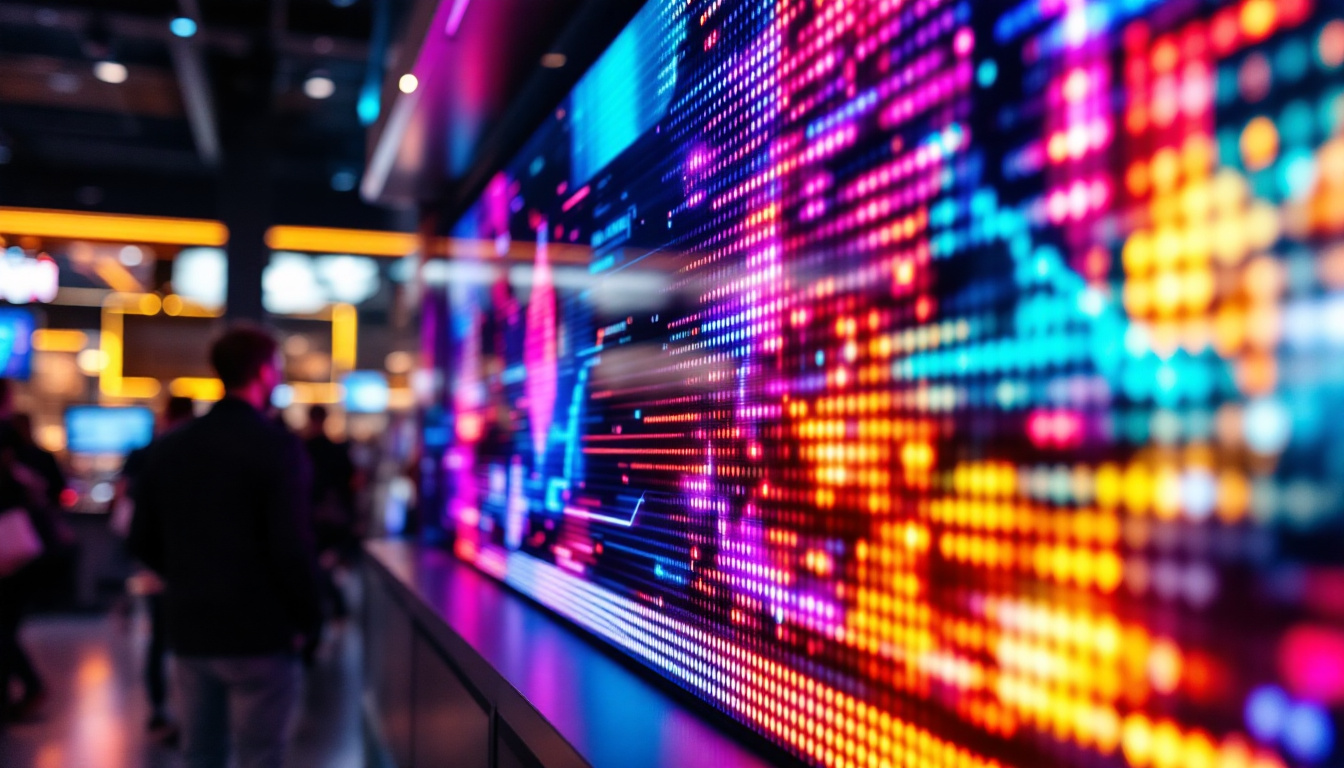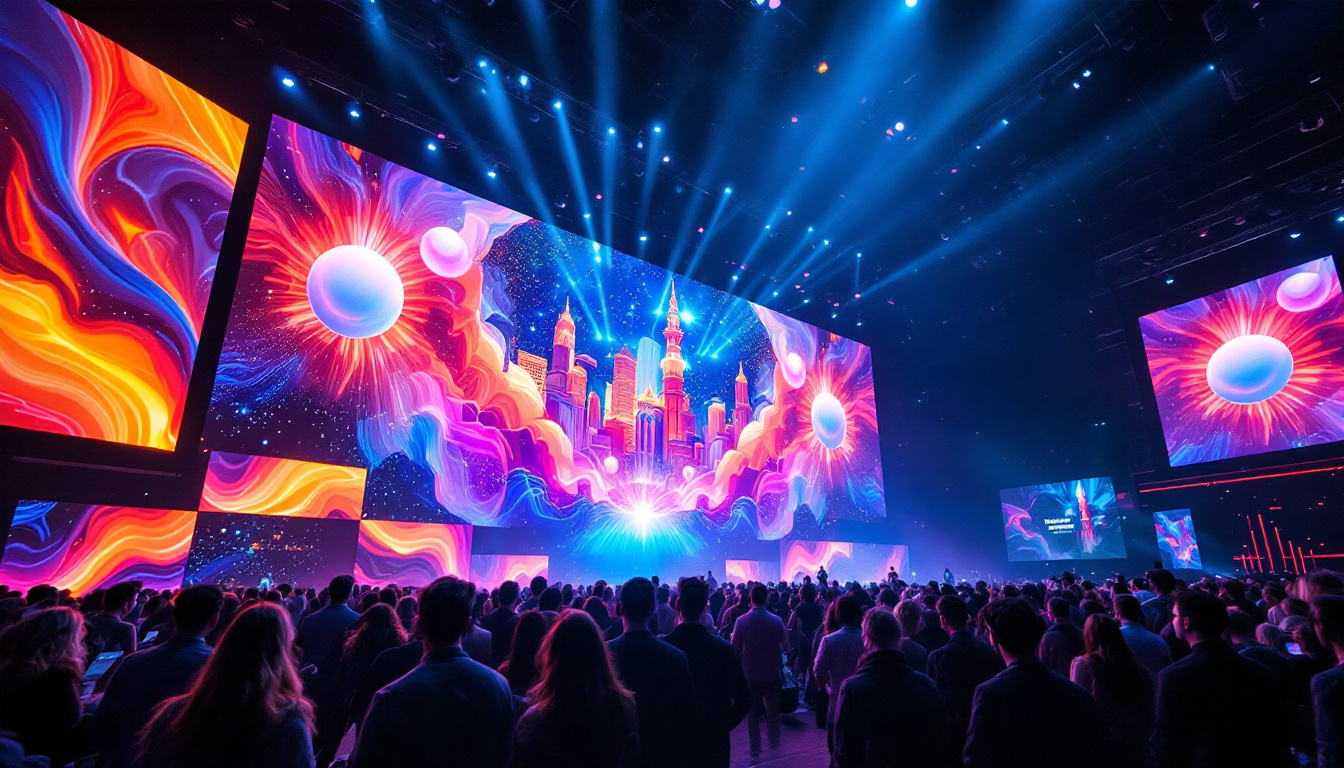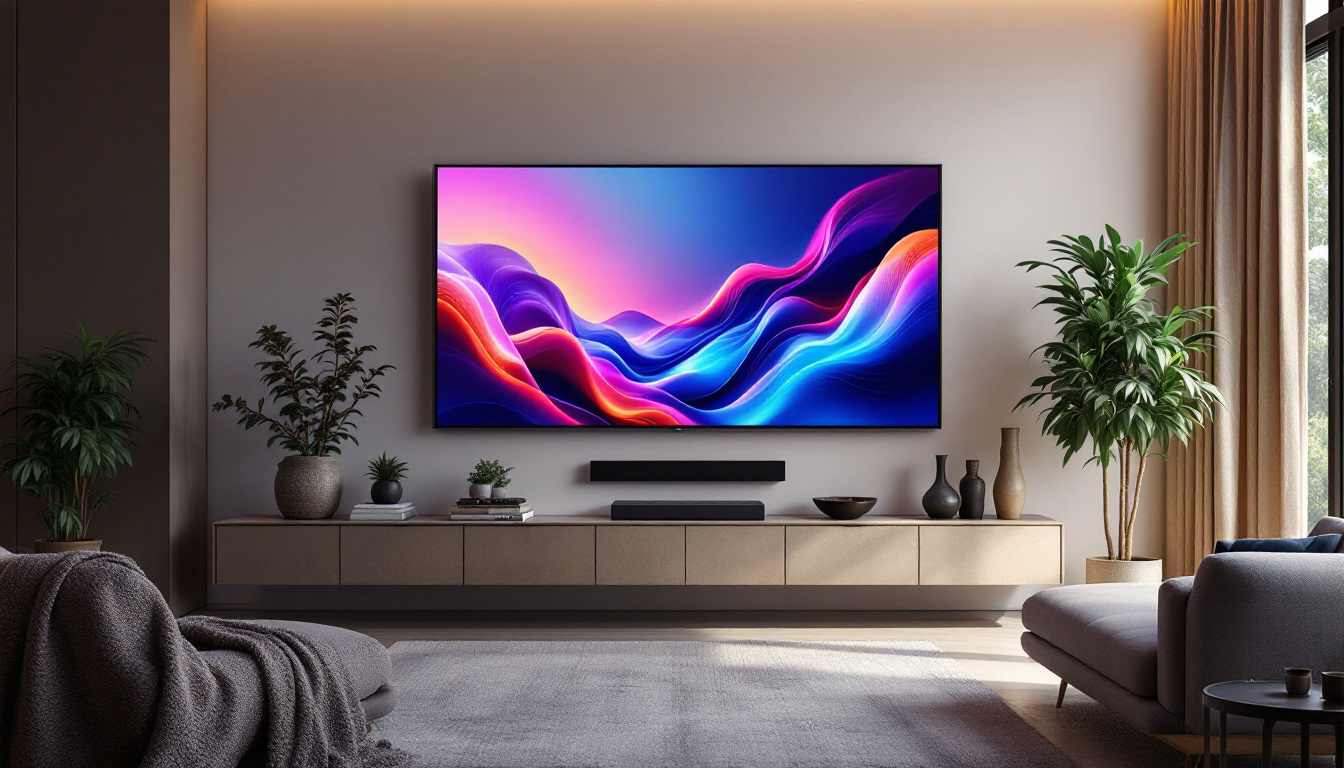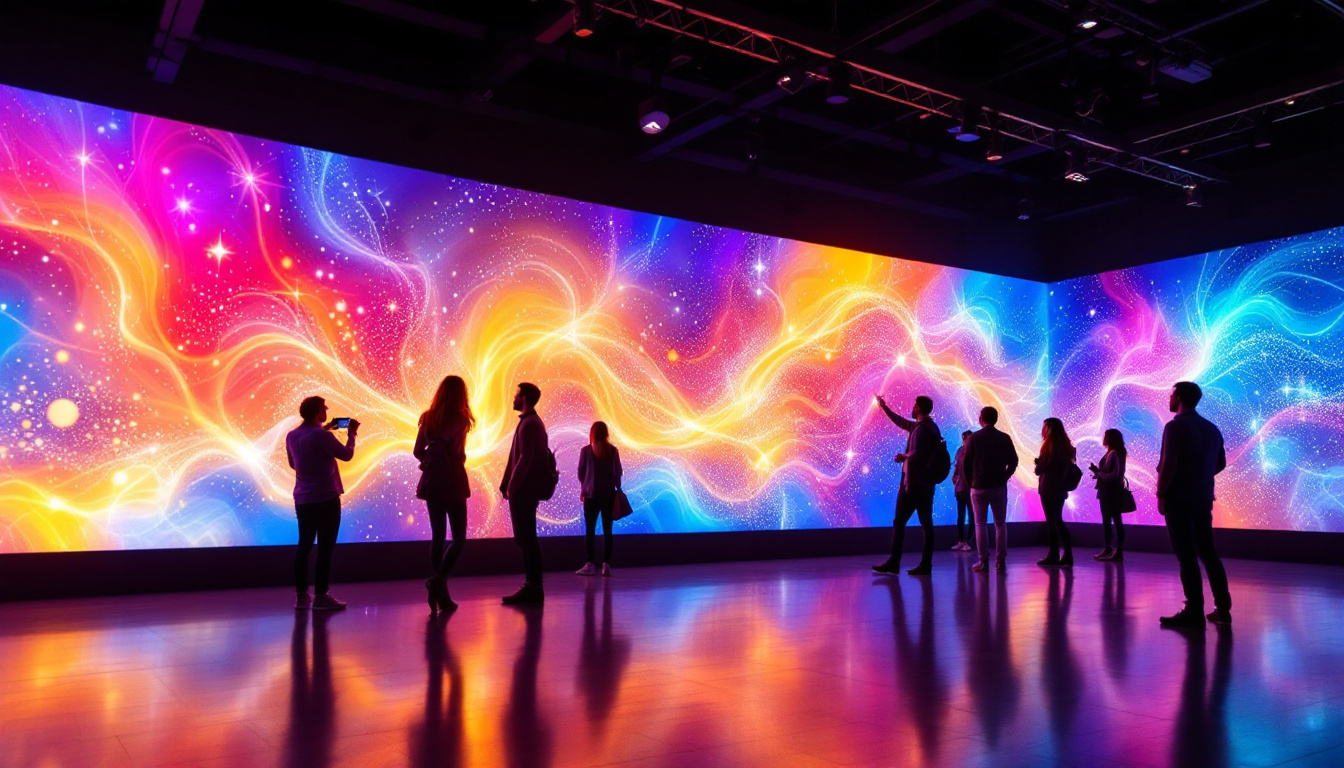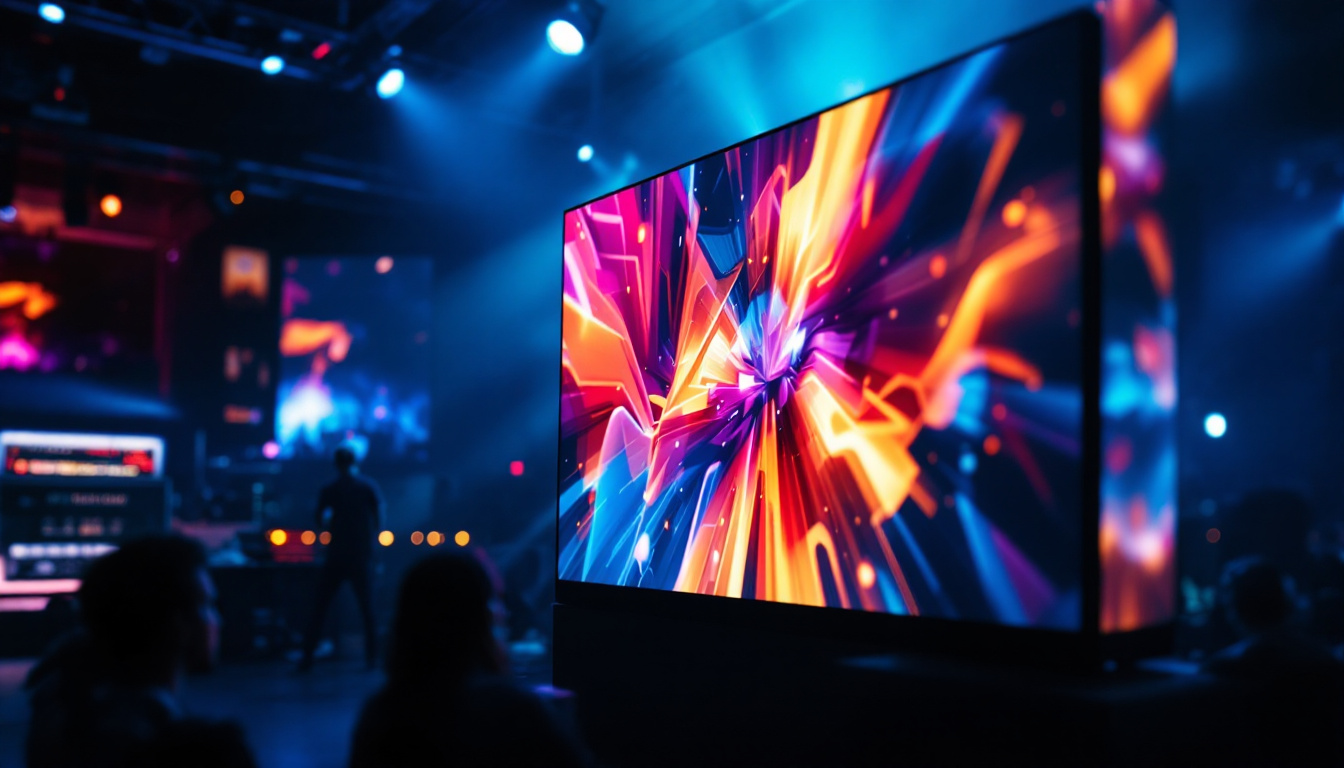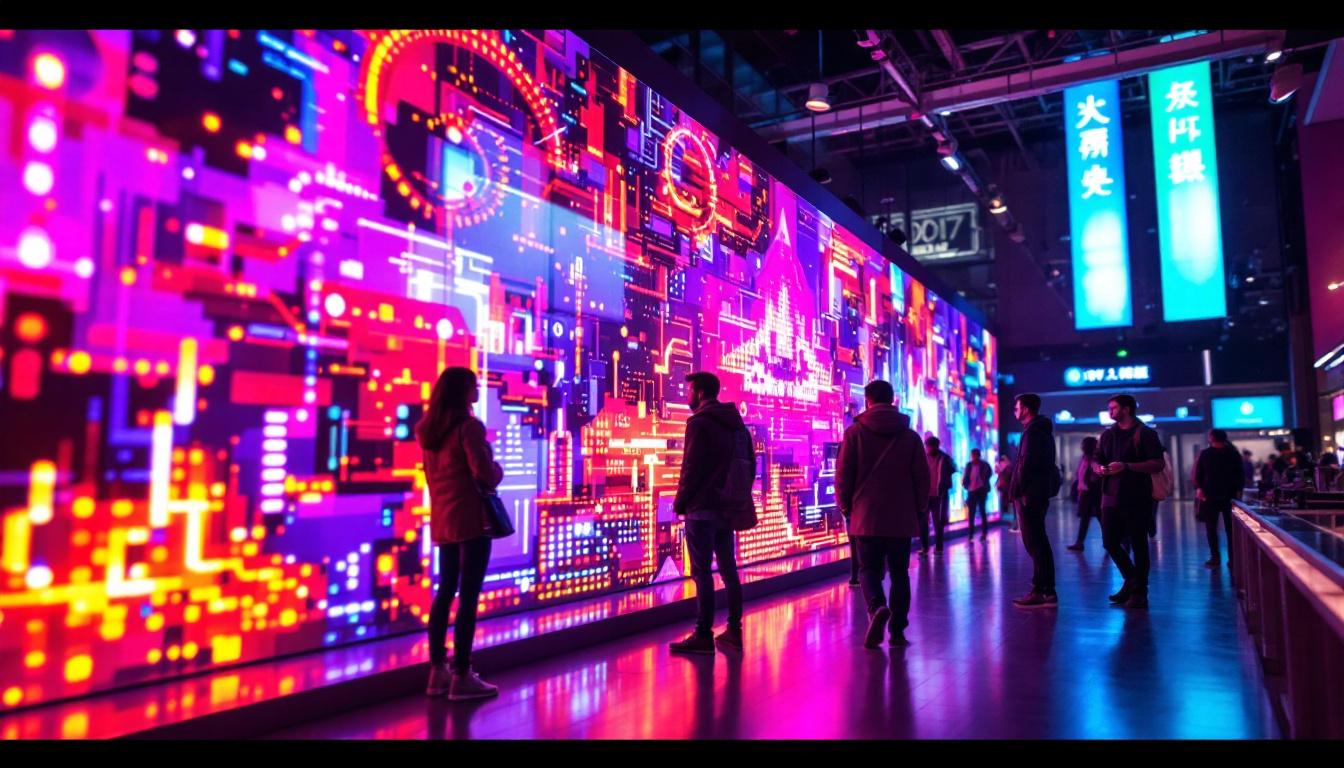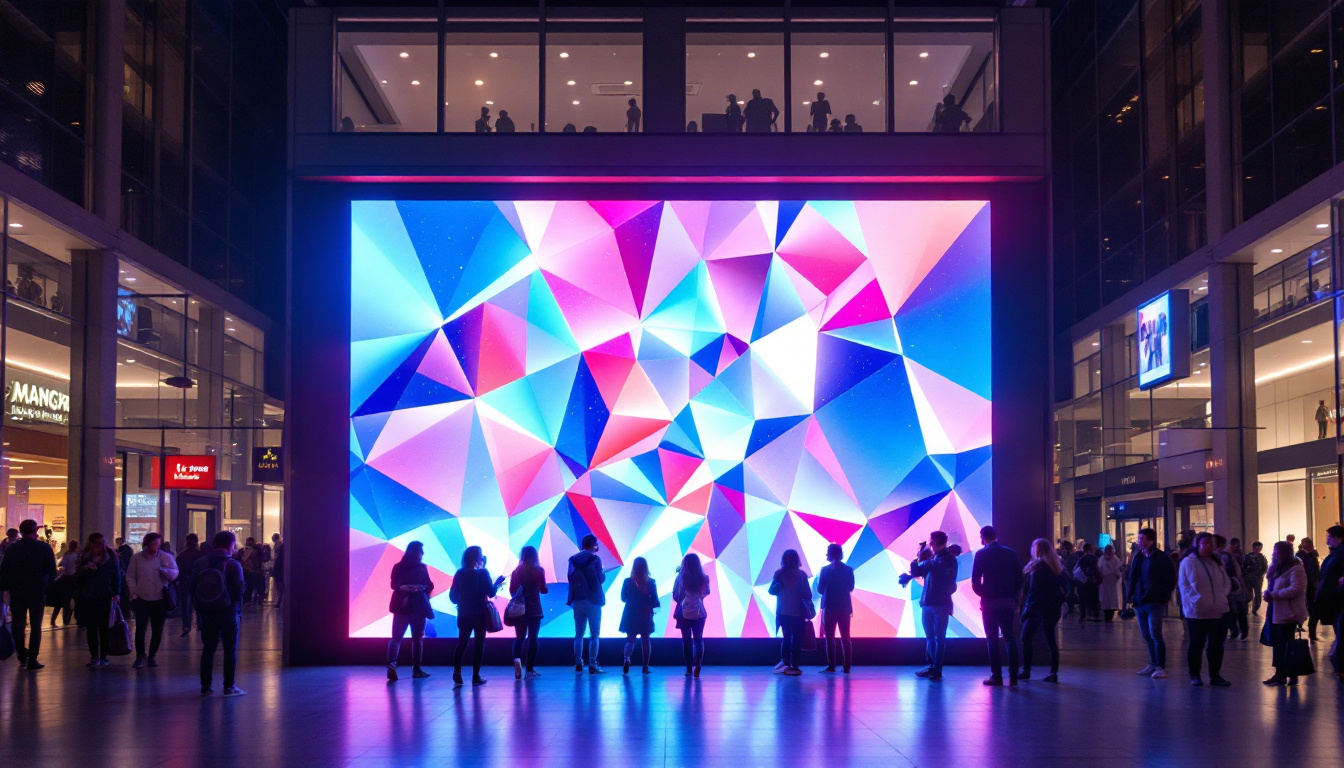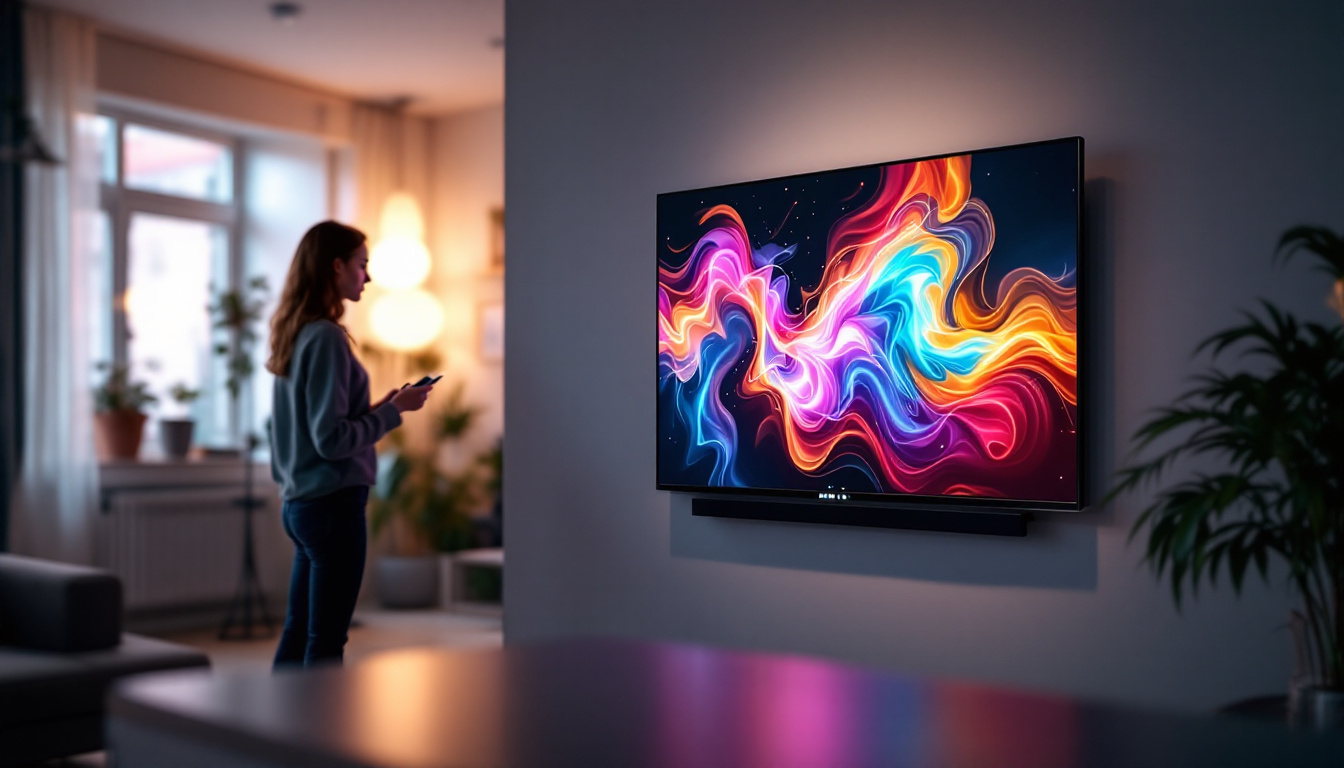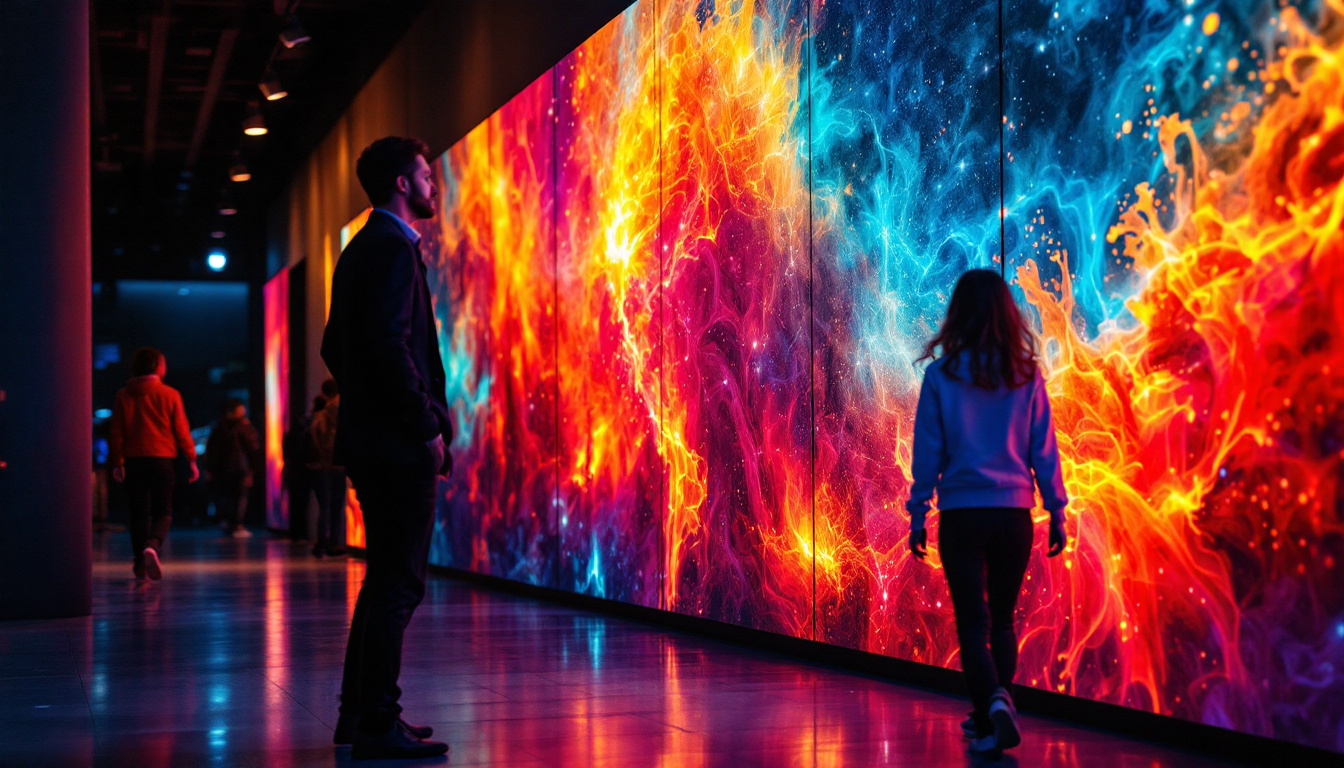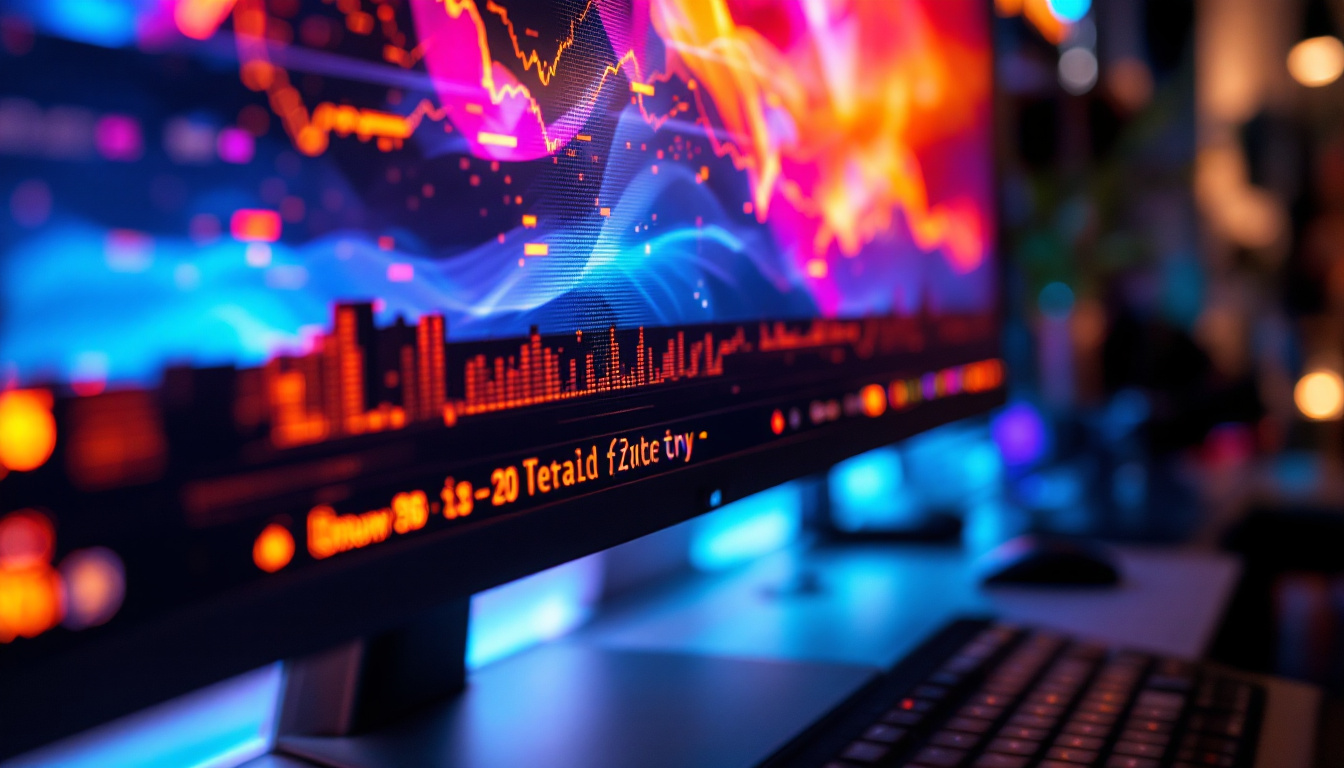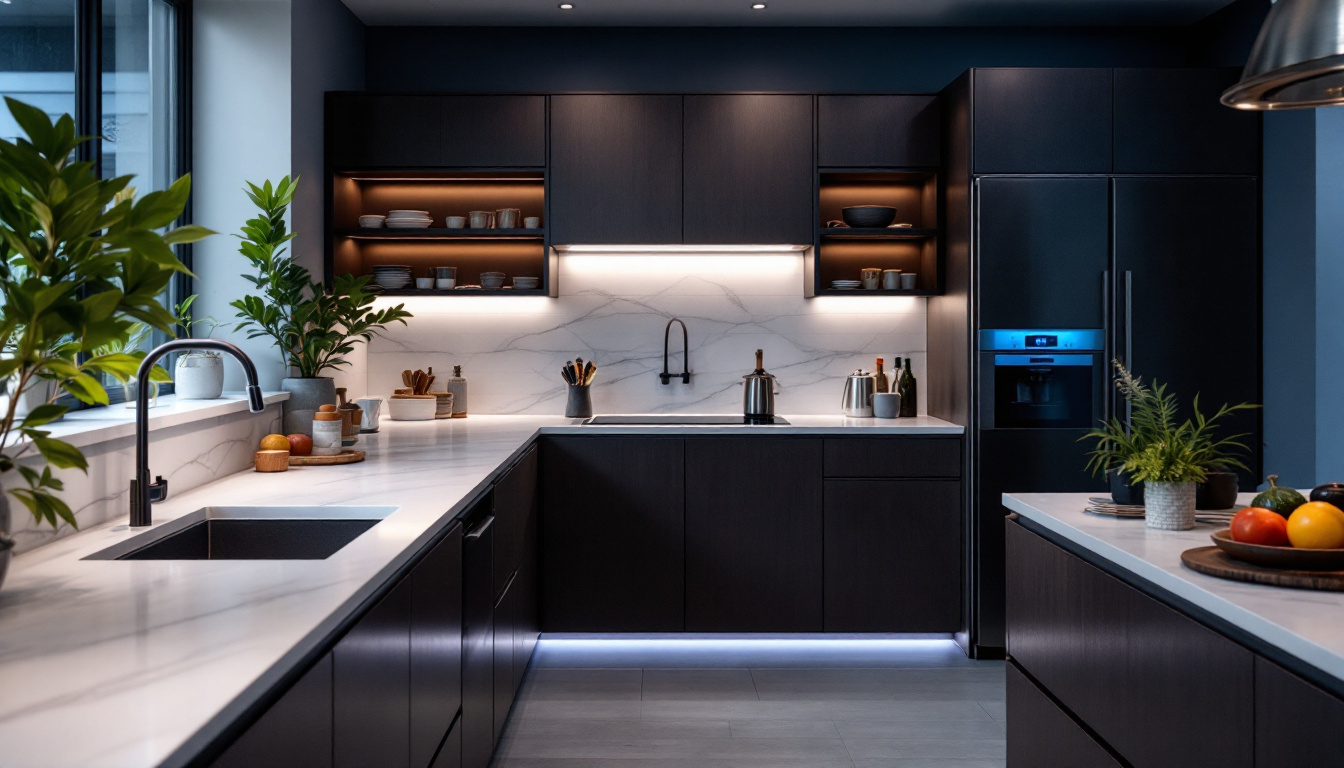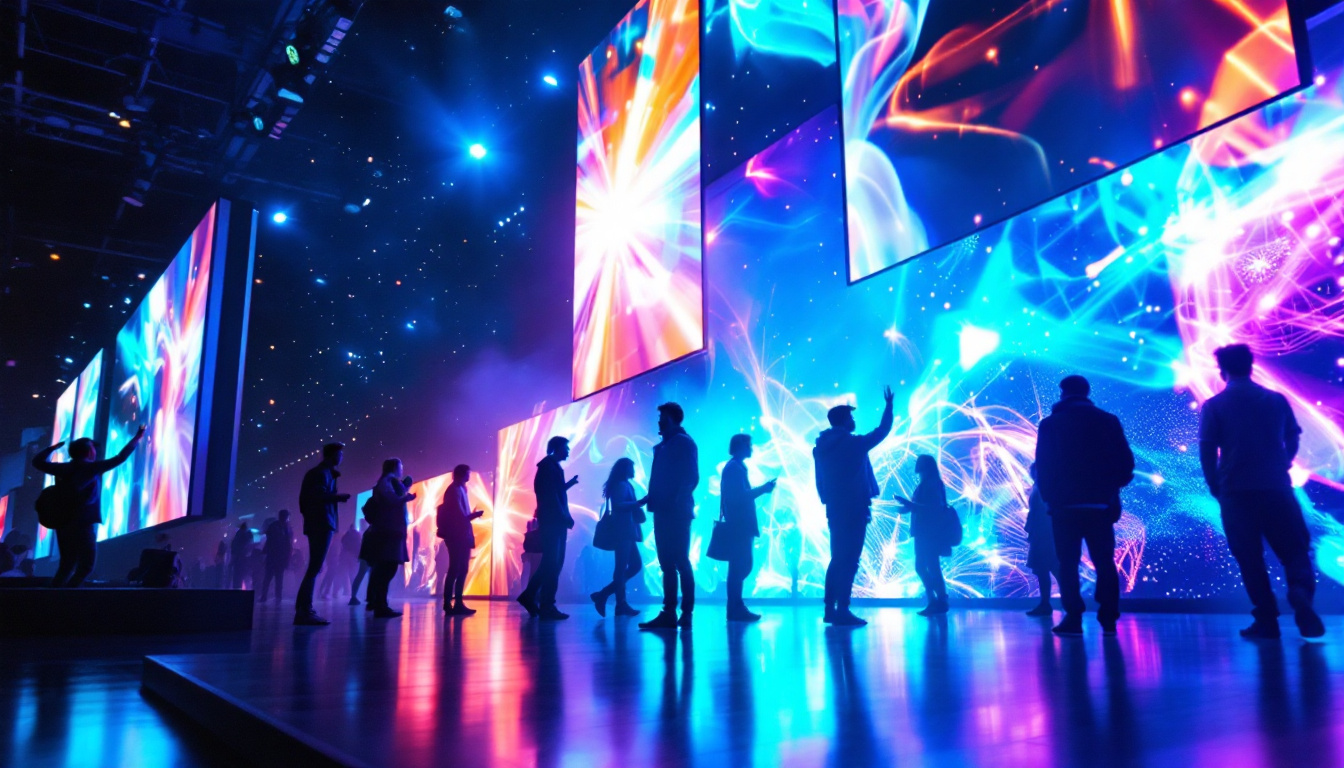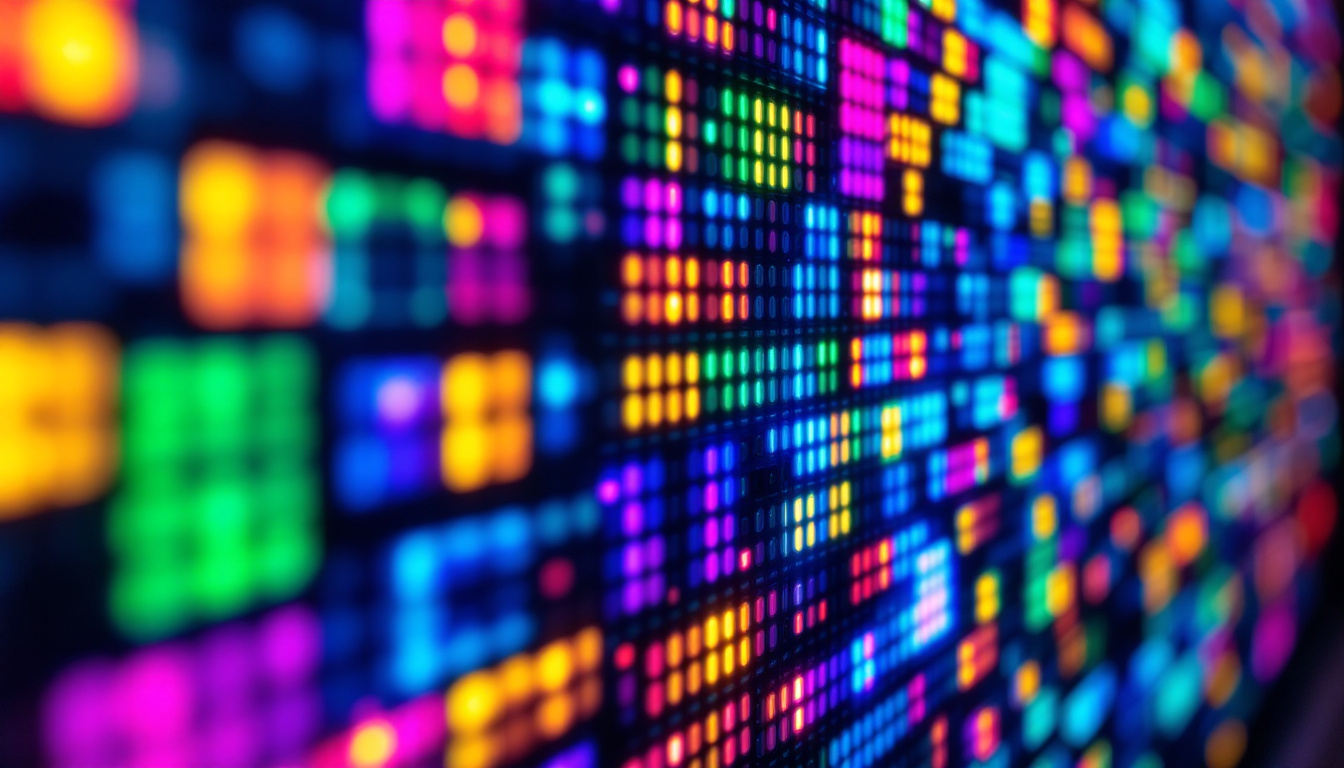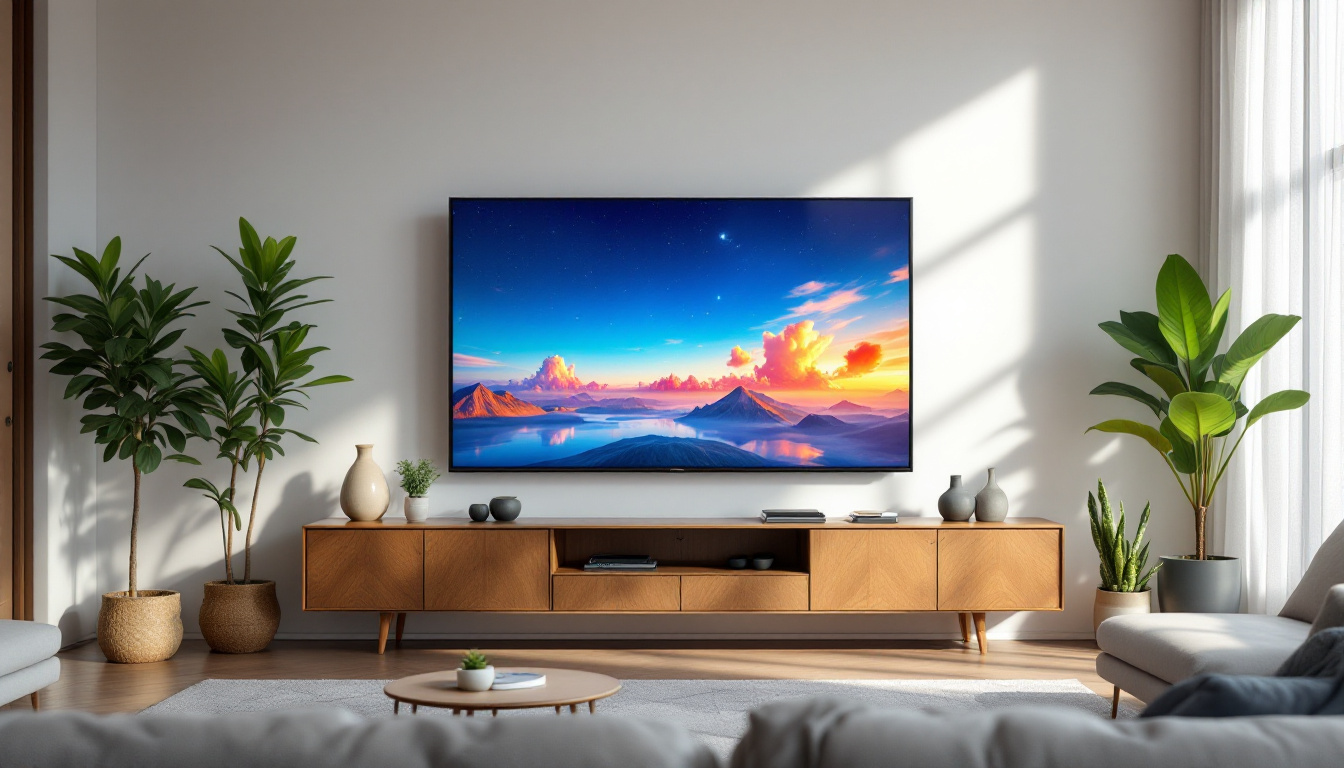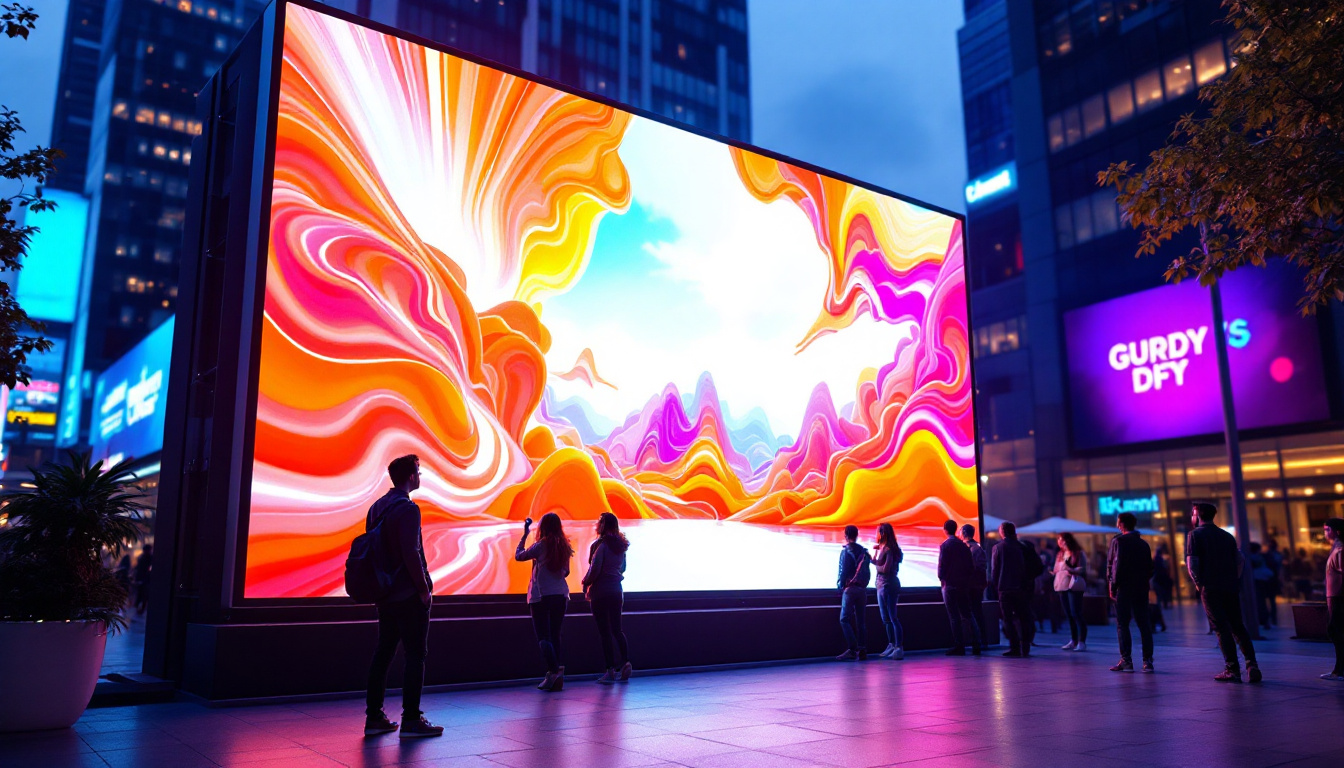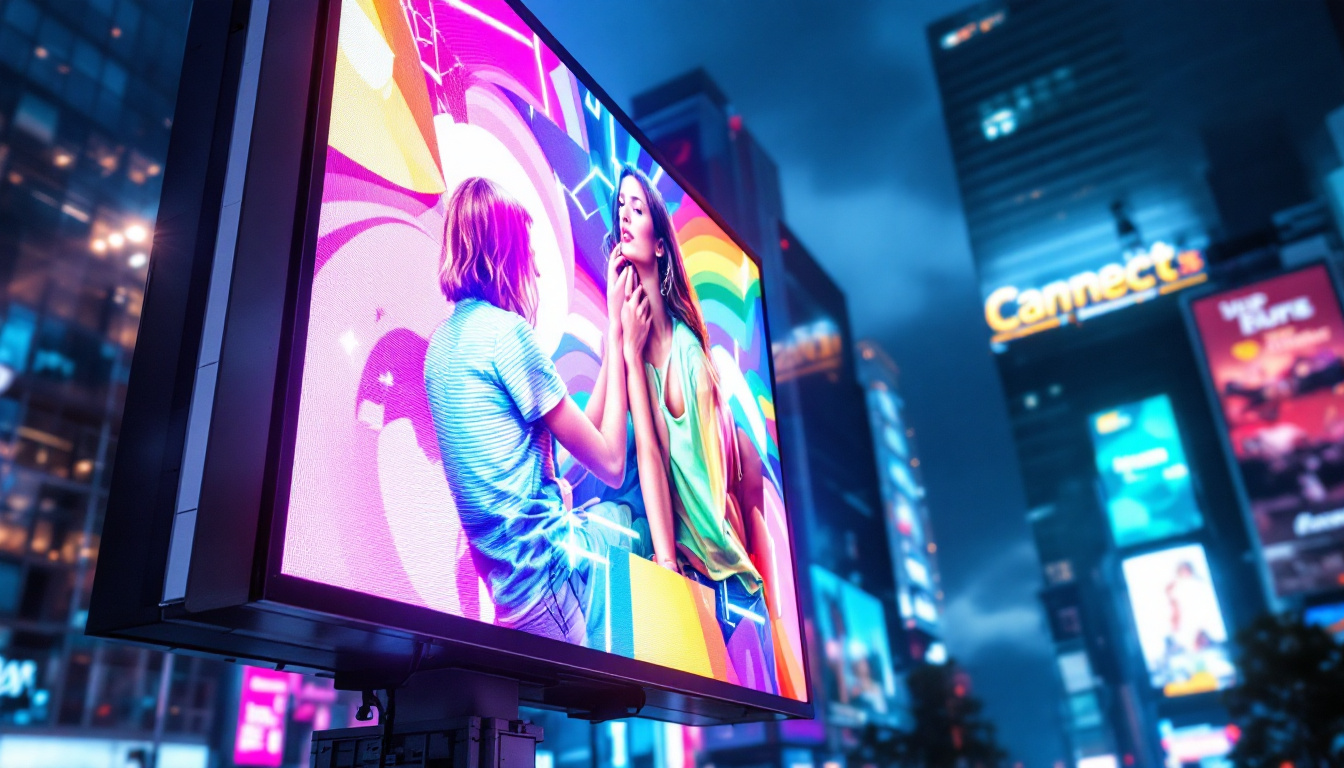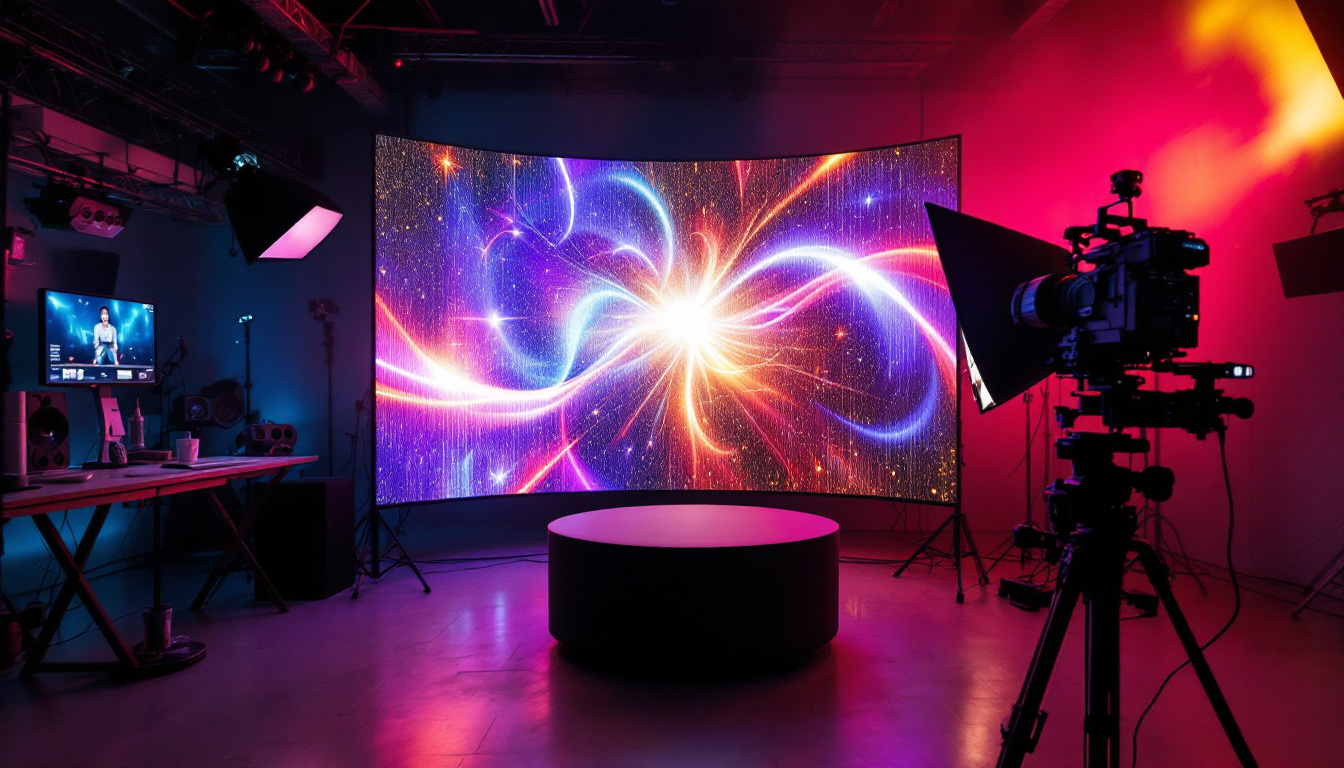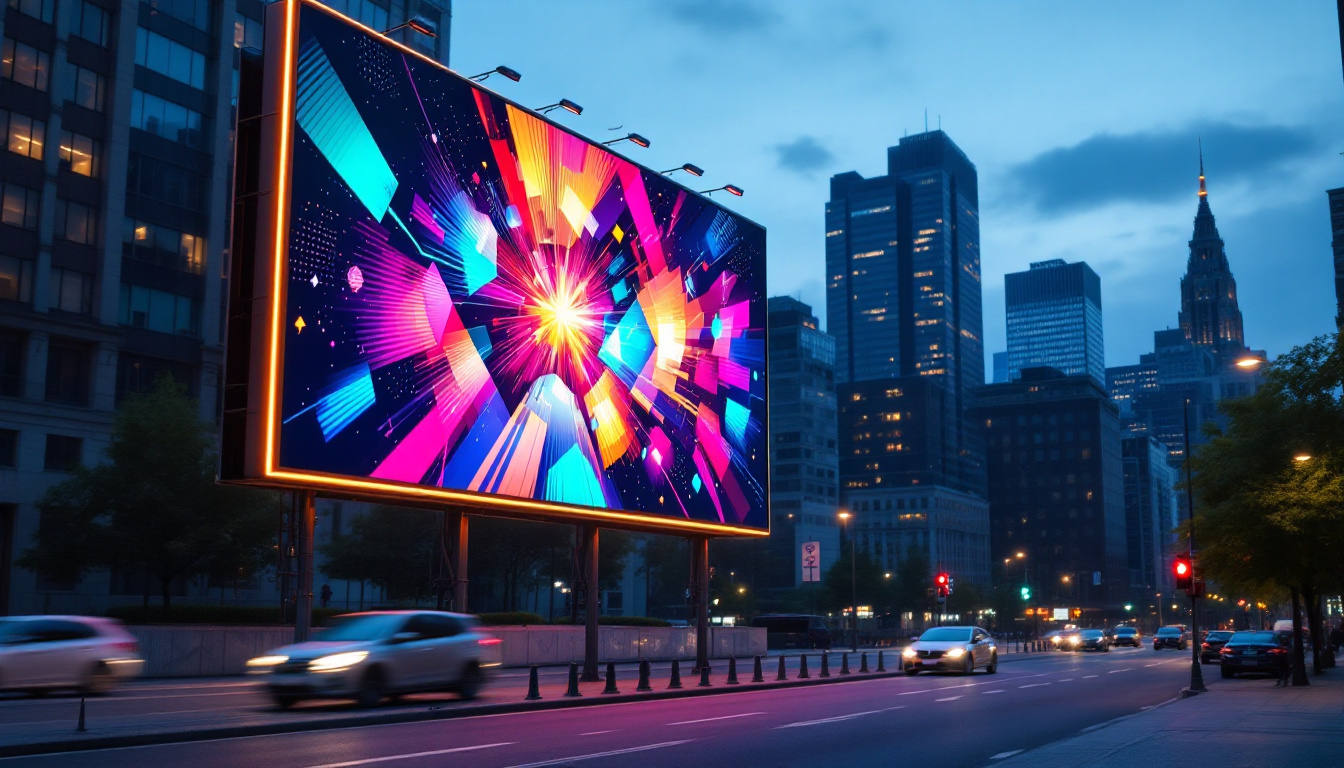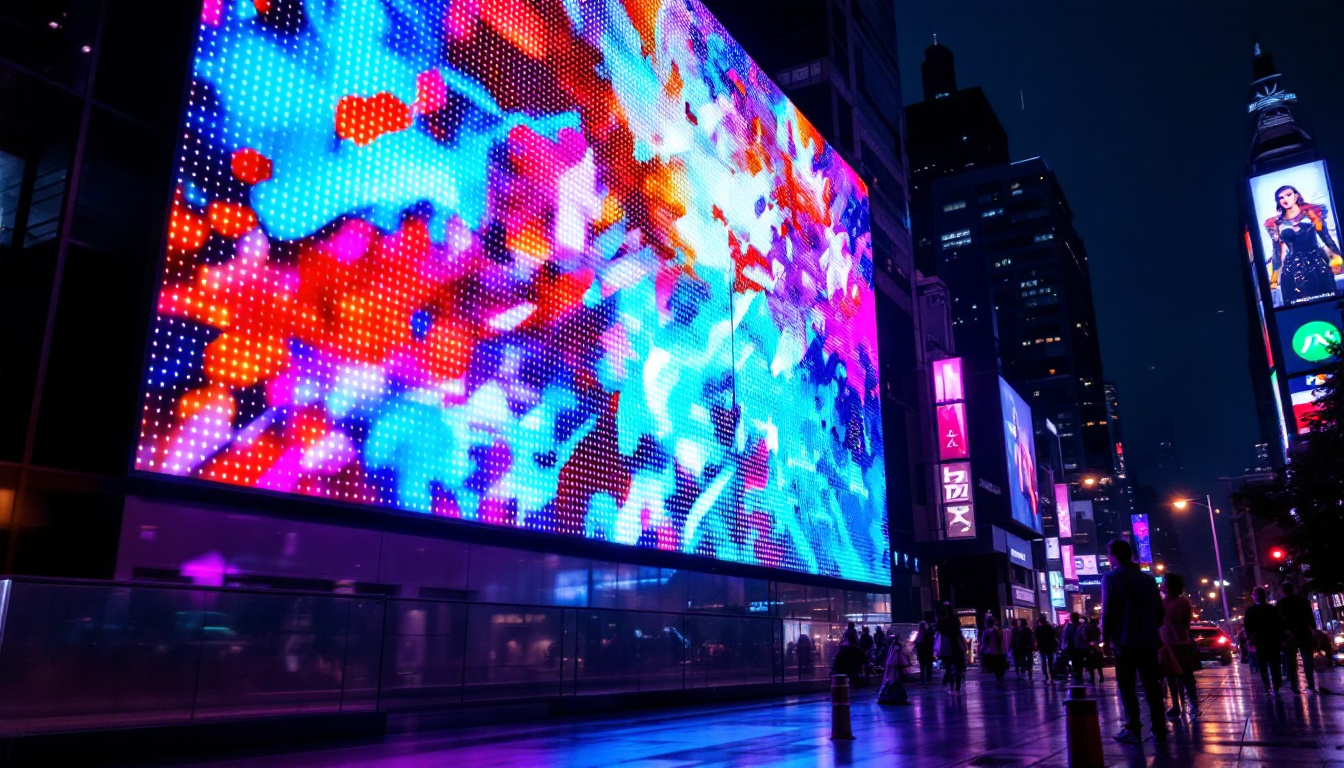In the world of visual technology, LED displays have become a staple for various applications, from advertising to entertainment. Understanding the dimensions of these displays is crucial for optimal installation and viewing experience. One common question that arises is how to convert inches to feet, particularly for larger displays like a 105-inch LED screen. This article aims to clarify this conversion and provide insights into LED displays.
Understanding the Basics of Measurement
Before diving into the specifics of LED displays, it’s essential to grasp the basic units of measurement. Inches and feet are both units used to measure length, with one foot equal to 12 inches. This relationship is foundational when converting measurements, especially in contexts where precise dimensions are necessary. For instance, in the world of construction and design, accurate measurements can mean the difference between a successful project and costly errors. Knowing how to convert between these units can streamline communication among professionals and ensure that everyone is on the same page regarding dimensions.
The Conversion Formula
To convert inches to feet, the formula is straightforward: divide the number of inches by 12. For example, to convert 105 inches to feet:
105 inches ÷ 12 = 8.75 feet
This means that a 105-inch LED display measures 8.75 feet diagonally. Understanding this conversion is vital for those looking to install or utilize large LED screens effectively. In addition to conversions, familiarity with other measurement units such as centimeters and meters can be beneficial, especially when dealing with international products or specifications. Many manufacturers provide dimensions in multiple units, which can aid in making informed decisions when selecting displays for various environments.
Why Size Matters in LED Displays
The size of an LED display significantly impacts its visibility and functionality. Larger displays are often used in environments where they need to be viewed from a distance, such as stadiums, concert venues, and large retail spaces. A 105-inch display offers a substantial viewing area, making it suitable for various applications. The placement of these displays is equally important; for instance, a display mounted high on a wall may require a larger size to ensure that viewers can see it clearly from below. Additionally, the viewing angle can also affect how well the display is perceived, making size a critical factor in design considerations.
Moreover, the size affects the pixel density, which in turn influences the clarity and quality of the image. Larger displays with lower pixel density may result in a less sharp image, which is an important consideration when selecting a display for specific purposes. For example, in a retail setting where product details need to be clearly visible, a higher pixel density is preferable to ensure that customers can see fine details from a distance. Furthermore, advancements in LED technology have led to the development of ultra-high-definition displays, which can provide stunning visuals even at larger sizes, making them an attractive option for businesses looking to captivate their audience.
The Importance of LED Technology
LED (Light Emitting Diode) technology has revolutionized the display industry. Unlike traditional LCD screens, LED displays use small diodes to produce light, resulting in brighter images and lower energy consumption. This section explores the advantages of LED technology and its implications for display size.
Benefits of LED Displays
LED displays offer numerous benefits that make them a preferred choice for various applications:
- Brightness: LED displays are known for their high brightness levels, making them easily viewable in bright environments.
- Energy Efficiency: Compared to traditional display technologies, LED screens consume less power, which can lead to significant cost savings over time.
- Longevity: LED displays have a longer lifespan, often lasting tens of thousands of hours, which reduces the need for frequent replacements.
Applications of 105-Inch LED Displays
Given their size and the advantages of LED technology, 105-inch displays find applications in various fields:
- Advertising: Retailers and businesses utilize large LED displays to capture attention and promote products effectively.
- Events and Entertainment: Concerts, sports events, and festivals often feature large screens to enhance the audience’s experience.
- Corporate Settings: In conference rooms and offices, large displays facilitate presentations and video conferencing.
Moreover, the versatility of 105-inch LED displays extends beyond conventional uses. In educational institutions, these large screens can transform the learning environment by providing immersive visual aids that enhance comprehension and engagement among students. Interactive features allow educators to display dynamic content, fostering a more interactive classroom experience. Additionally, in healthcare settings, large LED displays can be used for patient monitoring and information dissemination, ensuring that critical data is visible and accessible to medical staff at a glance.
The technological advancements in LED displays also pave the way for innovative designs, such as curved and flexible screens, which can adapt to various spaces and applications. This adaptability makes them suitable for creative installations in art galleries and museums, where they can be used to create captivating visual experiences that draw visitors in. As the demand for high-quality visuals continues to grow across industries, the role of LED technology in shaping the future of display solutions becomes increasingly significant.
Choosing the Right LED Display
When considering a 105-inch LED display, several factors come into play. It’s not just about size; the choice of display should align with the intended use and environment. This section delves into key considerations when selecting an LED display.
Resolution Matters
Resolution is a critical factor in display quality. It refers to the number of pixels that make up the image on the screen. Higher resolution means more pixels, resulting in sharper images. For a 105-inch display, common resolutions include Full HD (1920×1080) and 4K (3840×2160). The choice of resolution should depend on how close viewers will be to the screen.
For instance, if the display is intended for close viewing, such as in a conference room, a higher resolution is advisable to ensure clarity. Conversely, for large venues where viewers will be farther away, a lower resolution may suffice.
Brightness and Viewing Environment
Another crucial aspect to consider is the brightness of the LED display, measured in nits. The brightness level required will depend on the viewing environment. For outdoor settings or brightly lit areas, a display with higher brightness is essential to ensure visibility.
In contrast, indoor settings may allow for lower brightness levels. It’s important to assess the ambient light conditions and select a display that can perform optimally in those circumstances.
Installation Considerations for Large Displays
Installing a 105-inch LED display involves careful planning and execution. The installation process can vary based on the type of display and the environment in which it will be used. This section outlines key considerations for a successful installation.
Mounting Options
There are various mounting options available for large LED displays, including wall mounts, ceiling mounts, and freestanding structures. The choice of mounting should be based on the intended viewing angle and the layout of the space.
For example, wall mounts are ideal for fixed installations, while ceiling mounts may be better suited for venues with high ceilings. Freestanding displays can offer flexibility in placement but may require additional space.
Cabling and Power Requirements
Proper cabling is essential for the functionality of an LED display. This includes power cables and data cables that connect the display to a video source. It’s important to plan the routing of these cables to avoid clutter and ensure safety.
Additionally, the power requirements of a 105-inch LED display should be taken into account. Ensuring that the electrical supply can handle the display’s power consumption is crucial to prevent any operational issues.
Maintenance and Care for LED Displays
To ensure longevity and optimal performance, regular maintenance of LED displays is necessary. This section discusses best practices for maintaining a 105-inch LED display.
Cleaning the Display
Dust and dirt can accumulate on the surface of an LED display, affecting image quality. Regular cleaning is essential to maintain clarity. It is advisable to use a soft, lint-free cloth and a gentle cleaning solution specifically designed for screens.
Moreover, it’s important to avoid using abrasive materials that could scratch the surface. Establishing a cleaning schedule can help keep the display in top condition.
Software Updates and Calibration
Keeping the display’s software up to date is crucial for performance and security. Manufacturers often release updates that enhance functionality or fix bugs. Regularly checking for these updates can ensure the display operates smoothly.
Calibration is another important aspect of maintenance. Over time, colors may shift, and brightness levels may change. Regular calibration can help maintain the display’s color accuracy and overall performance.
Conclusion: The Future of LED Displays
As technology continues to evolve, LED displays are becoming more advanced, offering better resolution, brightness, and energy efficiency. The trend towards larger displays, such as the 105-inch model, reflects the growing demand for immersive viewing experiences.
Understanding how to convert measurements, select the right display, and maintain it is essential for anyone looking to invest in LED technology. With the right knowledge and considerations, users can maximize the benefits of their LED displays, enhancing both personal and professional environments.
Final Thoughts
The transition from traditional display technologies to LED has opened up new possibilities for visual communication. Whether for advertising, entertainment, or corporate use, a 105-inch LED display can make a significant impact. By understanding the nuances of size, technology, and maintenance, users can ensure they make informed decisions that lead to successful outcomes.
Discover LumenMatrix LED Display Solutions
Ready to elevate your space with a 105-inch LED display that promises to transform your visual experience? Look no further than LumenMatrix, a pioneer in LED display technology. Our extensive range of solutions, from Indoor and Outdoor LED Wall Displays to innovative LED Sports and Floor Displays, is designed to meet your unique needs. Whether you’re looking to captivate your audience, enhance brand visibility, or create an immersive environment, LumenMatrix has the expertise to bring your vision to life. Check out LumenMatrix LED Display Solutions today and join the revolution in visual communication.

